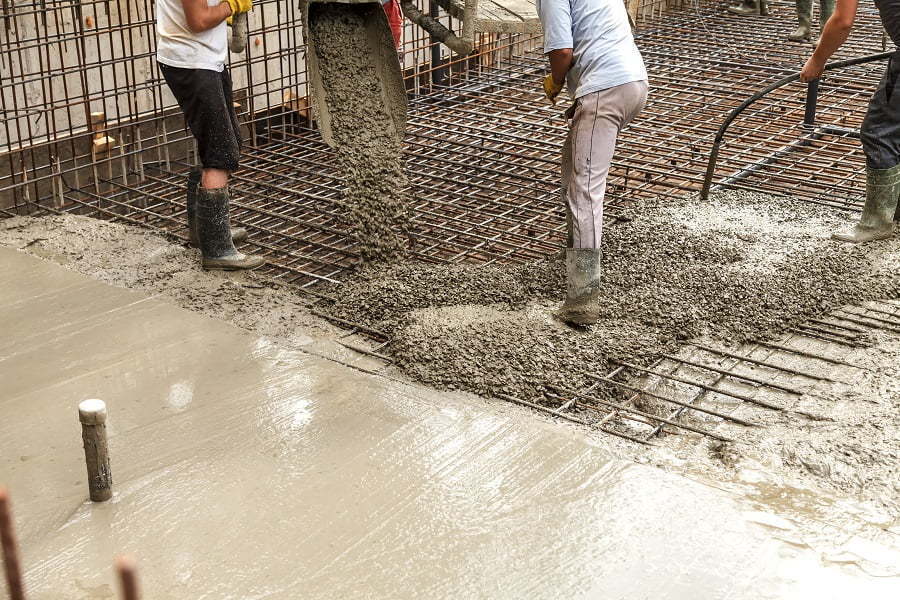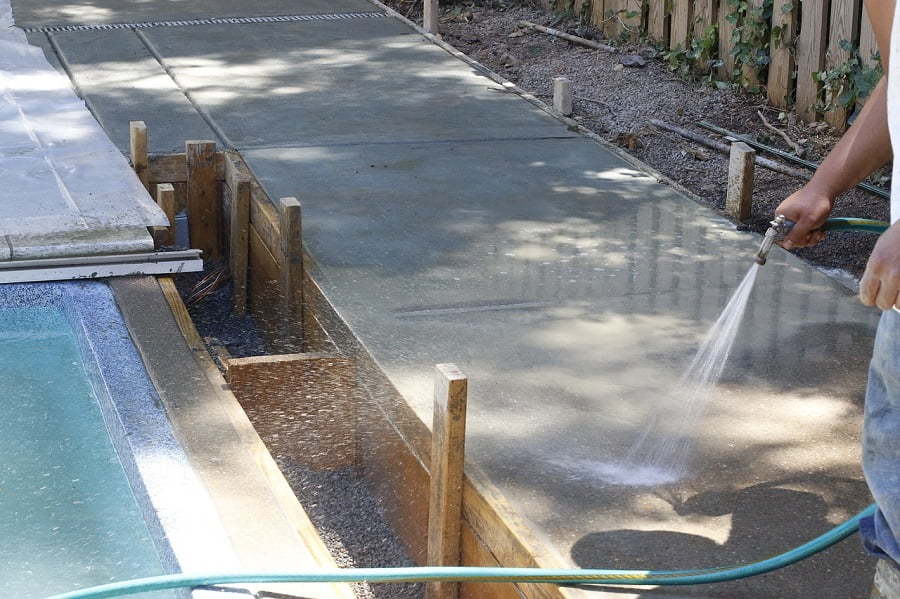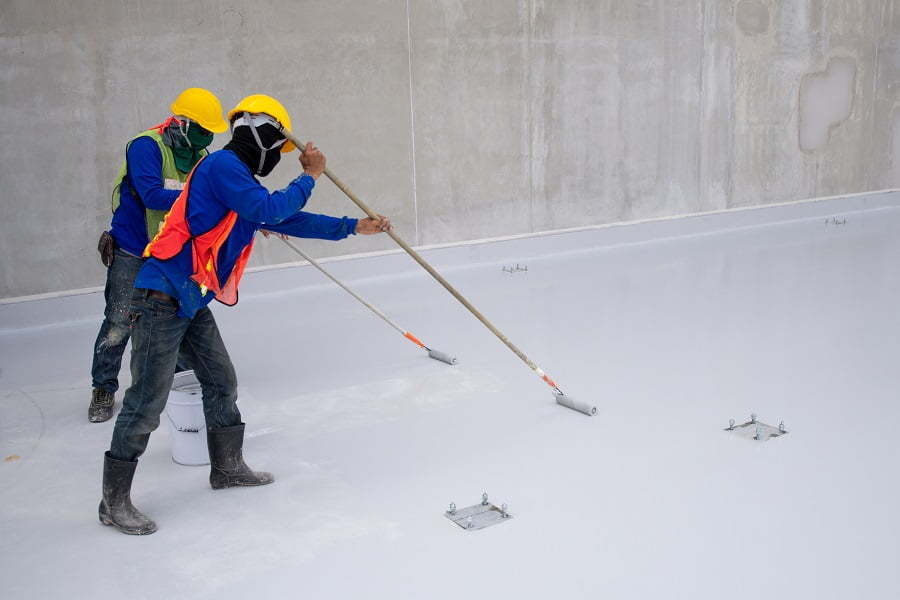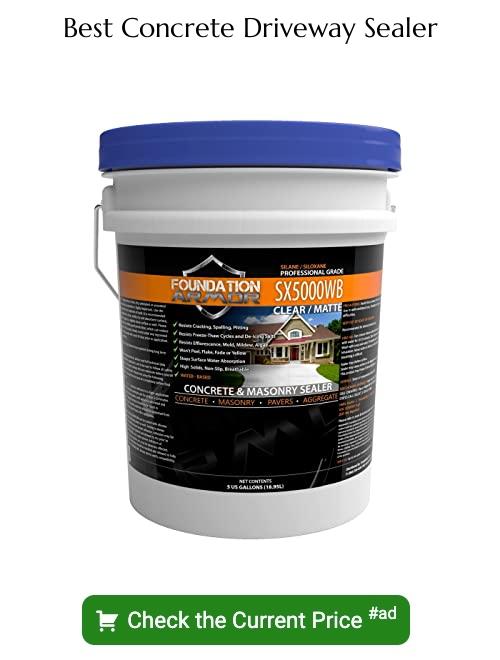Last updated on
In short, you can drive on it in as soon as 24 hours. The long answer is: it depends. There are several factors that influence the exact time for the concrete and its sealant to dry completely. Read on to find out!
Concrete driveways are a popular choice for homes and businesses. Durable and low maintenance, concrete can be a worthwhile investment, particularly for large surface areas.
Though more costly at the onset in comparison to other options such as gravel or asphalt, the longevity, and durability of concrete will likely offset the cost in the future. Concrete typically outlasts even more expensive options such as cobblestone or brick, with considerably less maintenance.
The variety of stamps and colors available also makes concrete an aesthetically pleasing option that can be customized to suit the needs of the individual.
Whether repaving an existing driveway or laying a concrete driveway for the first time, it can be quite the process, taking up to several weeks from start to finish.
There are several common homeowners have after choosing a concrete driveway, one of the most common is how long it will take to complete and how long before it can be driven on after it’s done and how long after the sealant is applied. The answer may vary depending on several factors.
The answer to these questions varies depending on several factors.
The Pavement Process

Before the process of laying concrete can begin, grass and vegetation must be removed and the area will need to be prepped. Prepping includes, cleaning and leveling. This part of the process can take a great deal of time.
Once the prep work is complete the concrete can be poured. One of the benefits of concrete is that it can take the form of what it is poured into, however concrete sets fairly quickly and doesn’t leave a lot of room for errors. Once it is poured, clean up and adjustments can be difficult particularly for novices.
Perhaps one of the most challenging aspects is “floating” the concrete. This step levels and smooths the surface of the driveway ensuring that it is level. During this time, is when prints or color may be added.
One of the most important parts, and likely one of the longest, of the paving process, is curing. The ideal temperature for curing is 70 degrees, cooler weather may require extra time for the driveway to cure completely.
Due to the potential for errors and difficulty in correcting them, many homeowners choose to consult a professional to assist with the preparation and laying of the concrete driveway.
Wait for the Sealant

After the driveway has been laid and cured, it can be driven on relatively soon, however, there is one more step before the project is complete.
Adding a sealant to the concrete can help protect the surface of the concrete slab and help prevent cracking or other negative effects of age. Most concrete contractors recommend the use of sealant.
Adding a sealant will increase the overall amount of time necessary to complete the driveway, however, it will also increase the longevity and the durability of the driveway in the long run.
Unsealed concrete is porous, allowing materials to soak into it. Absorbing liquids can lead to stains and discoloration and even corruption of the concrete itself.
Sealant shouldn’t be added immediately after the concrete is poured. The concrete must cure completely prior to adding sealant. Experts recommend waiting at least 30 days before sealing the driveway.
Parking and driving on the driveway can occur about 7 days after it is poured before it is sealed, and a month before parking heavy vehicles or machinery on it.
If you aren’t sure when to add the finish or what type of finish to use, consider contacting a contractor that could help.
The Sealant Process

It is recommended that a professional complete the sealant process. There are several types of sealant and different levels of gloss, a professional can help determine the most appropriate sealant for an individual project.
Before sealant can be applied, the driveway must be cleaned. This doesn’t mean just a cursory sweep. Soap and water and maybe a degreaser will be needed. Sealant applied to a dirty or stained driveway will not be effective.
If there are any cracks, dents, or stains, those should also be repaired prior to appealing the sealant.
Depending on the type of sealant being applied a roller or a sprayer will be used. Sealant application can be time-consuming. Most driveways require 2-3 coats with about two hours of dry time in between each coat. It is important to note that weather conditions such as heat and humidity can increase dry time to as much as 5 hours.
After the Sealant

Once the sealant has been applied, look for any spots that may have missed, these will be obvious as there will be a difference in color.
Most experts recommend waiting 24 hours for the sealant to dry before driving or parking on the driveway and 30 days before parking heavy vehicles or machinery on it.
Once the sealant is dry, there are some simple steps that should be taken to ensure longevity and care for the driveway. Keeping the driveway clean, sweeping, and the occasional scrubbing with soap and water, and if necessary degreaser, will increase the lifespan of the driveway.
There is some disagreement as to how often a driveway should be sealed, with some experts saying yearly and others insisting that every two or three years is sufficient.
Of course, variables such as weather and use should be considered when deciding how frequently to seal. Cold weather, snow, and salt can lead to more damage and may require more frequent sealant applications.
The Takeaway
Concrete is a versatile material for a variety of home renovation projects including driveways. Prints and dyes allow for unique aesthetics without compromising durability or longevity.
With a little bit of time and care, and maybe some recommendations from a professional, the process of laying a concrete driveway can be completed and sealed rather quickly.
Simple maintenance and care in the years that follow will ensure that the driveway lasts and keeps its strength and integrity.
Recap




